romanticism
1/47
There's no tags or description
Looks like no tags are added yet.
Name | Mastery | Learn | Test | Matching | Spaced |
|---|
No study sessions yet.
48 Terms
Germaine de Staël
introduced the new Romantic movement to France in 1810
Germaine de Staël claimed that while Italian art is routed in the rational, orderly Classical - ancient Greek and Roman, the northern European countries were quite different
She held that her native culture of Germany - and perhaps France - was not Classical but Gothic and therefore privileged emotion, spirituality, and naturalness over Classical reason
Romanticism was a pan-European movement that had its roots in England in the mid-18th century
initially associated with literature and music, it was in part a response to the rationality of the Enlightenment and the transformation of everyday life brought about by the Industrial Revolution
Jean-Auguste-Dominique Ingres
born 1780; dad was jack-of-all-trades, mother was nearly illiterate
traveled to Paris to study in studio of Jacques-Louis David (neoclassical style)
followed his master’s neoclassical style, but gradually moved away from Roman models of rigorous realism to the ideals of purity, virtue and simplicity in Greek art
competed for Prix de Rome twice: (1. 2nd, 2. 1st)
style → purity of contour
La Grande Odalisque, 1814
The Turkish Bath, 1563
died of pneumonia in 1867
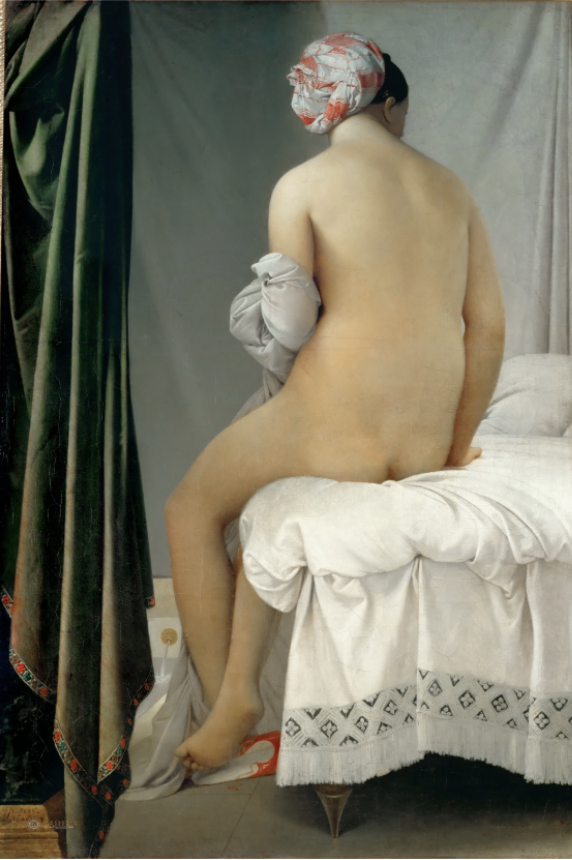
The Valpinçon Bather
Jean August Dominique Ingres

LaFormarina
Raphael

The Vow of Louis XIII
Jean August Dominique Ingres
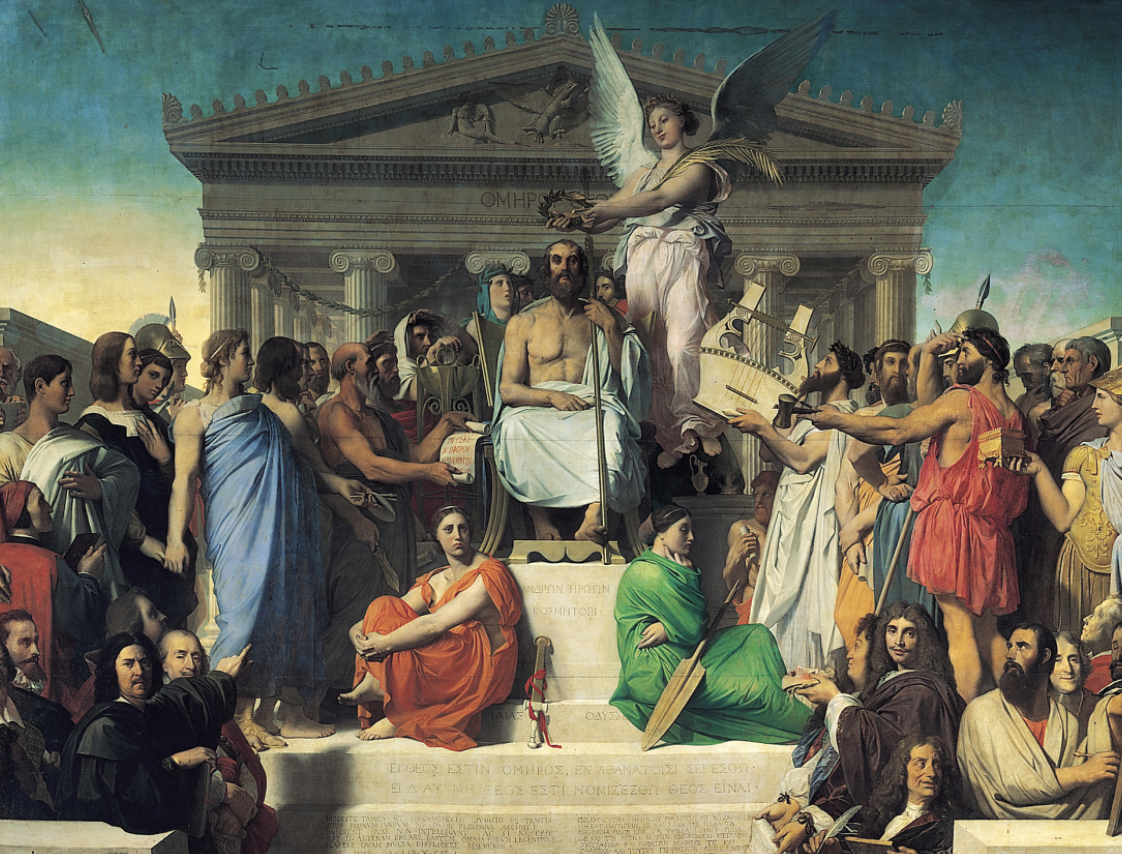
The Apotheosis of Homer
Jean Auguste Dominique Ingres
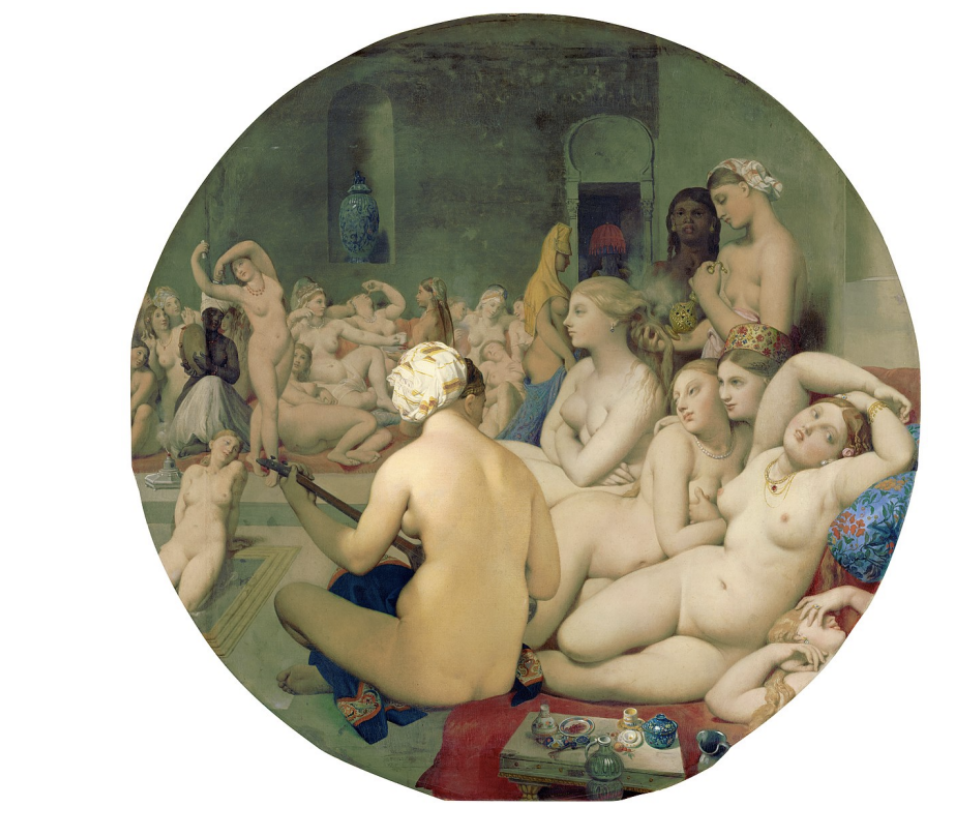
The Turkish bath
Jean Auguste Dominique Ingres
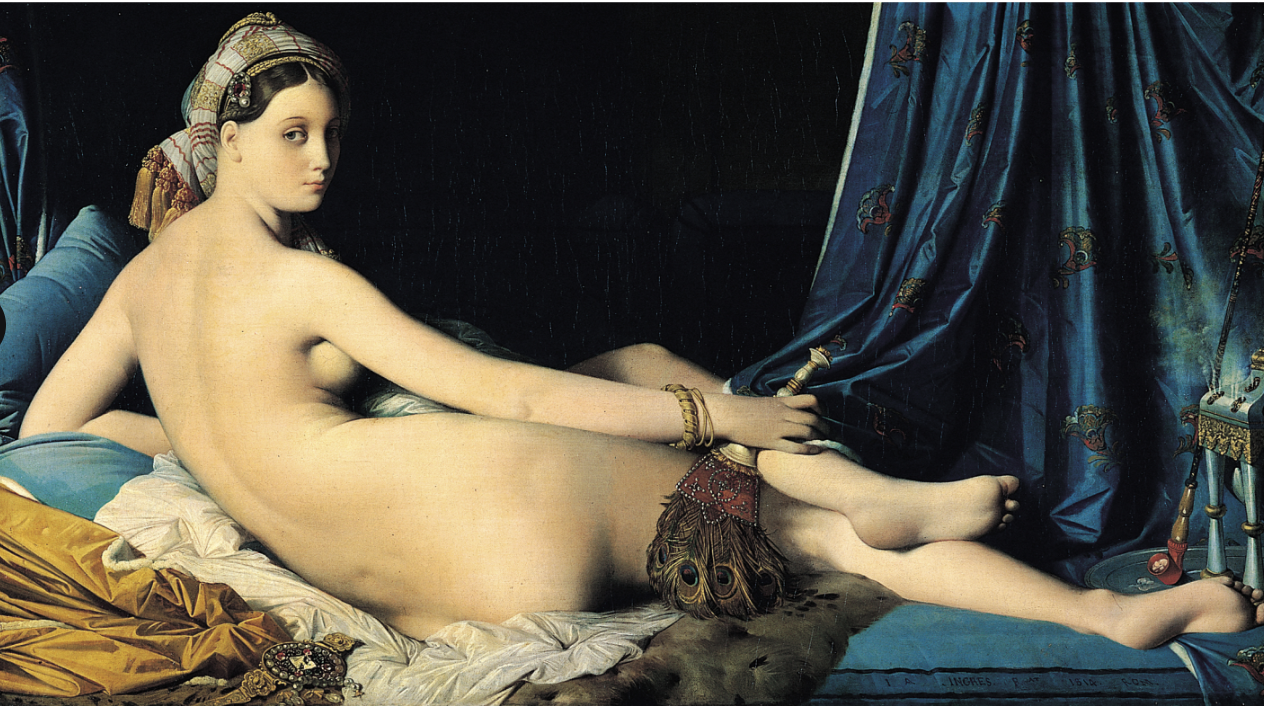
La Grande Odalisque
Jean Auguste Dominique Ingres
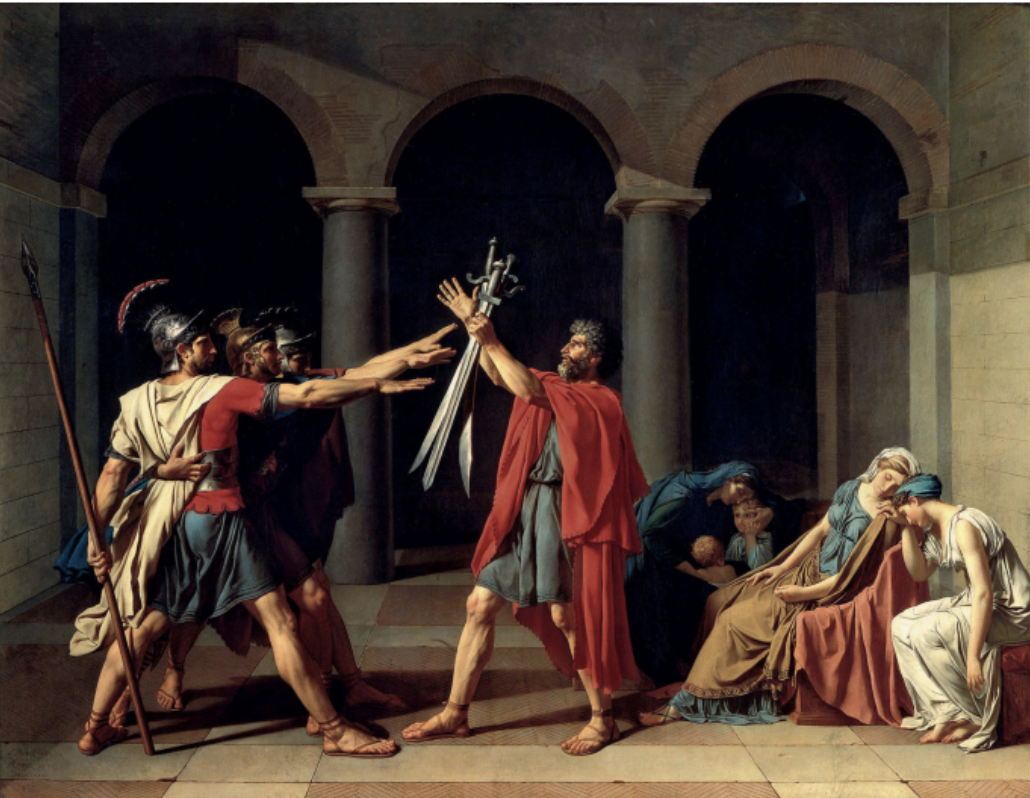
Oath of the Horatii
Jacques-Louis David
orientalism
the imitation/depiction by Western writers/artists of aspects in the Eastern world.
Orientalist painting, specifically the Middle East, was one of the
specialisms of 19th-century academic art, and the literature of Western countries took a similar interest in Oriental themes
Orientalism: Edward Saïd
a dominant European political ideology created the notion of the Orient in order to subjugate and control it.
→ the West could control and authorize views of the East; enabled the West to generalize & misrepresent North Africa, the Middle East, and Asia
Théodore Géricault
born in Rouen, France in 1791
educated in tradition of classical figure composition by Carle Vernet and by Pierre-Narcisse Guérin
discovered vitality
first big success = The Charging Chasseur
grew fascinated with Michelangelo
most significant work = The Raft of the Medusa
ten Portraits of the Insane
died at 32 (tuberculosis)
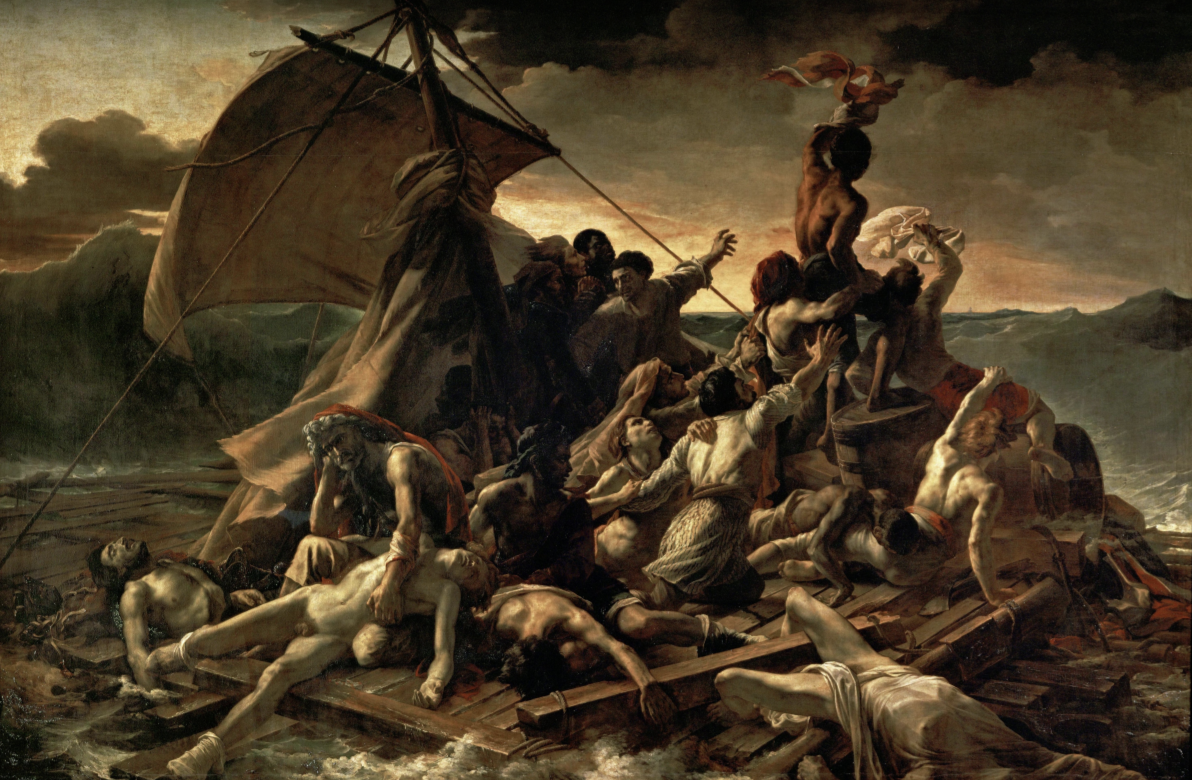
The Raft of the Medusa
Géricault
depicted the aftermath of a contemporary French shipwreck, Meduse, in which the captain had left the crew and passengers to die
ignited political controversy when first exhibited at the Paris Salon of 1819
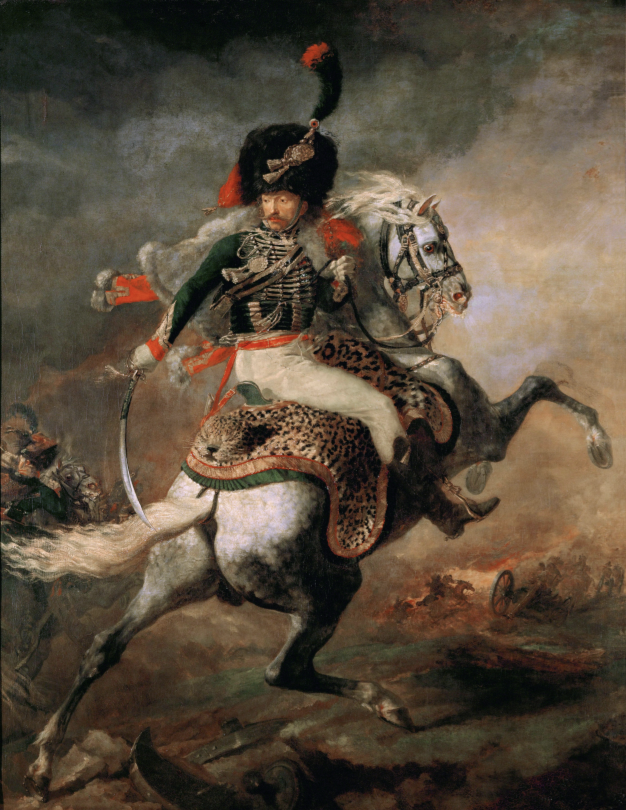
The Charging Chasseur
Gericault
Gericault’s first big success

Portraits of the insane
Gericault
Gericault was inspired to paint a series of 10 portraits
subjects were the patients of a friend, Dr. Georget, a pioneer in psychiatric medicine
each subject exhibited a different affliction
Eurgène Delacroix
born in France, 1798
trained in neoclassical style of Jacques-Louis David
first major painting = The Barque of Dante
Massacre at Chios
The Death of Sardanapalus
most influential work = Liberty Leading the People
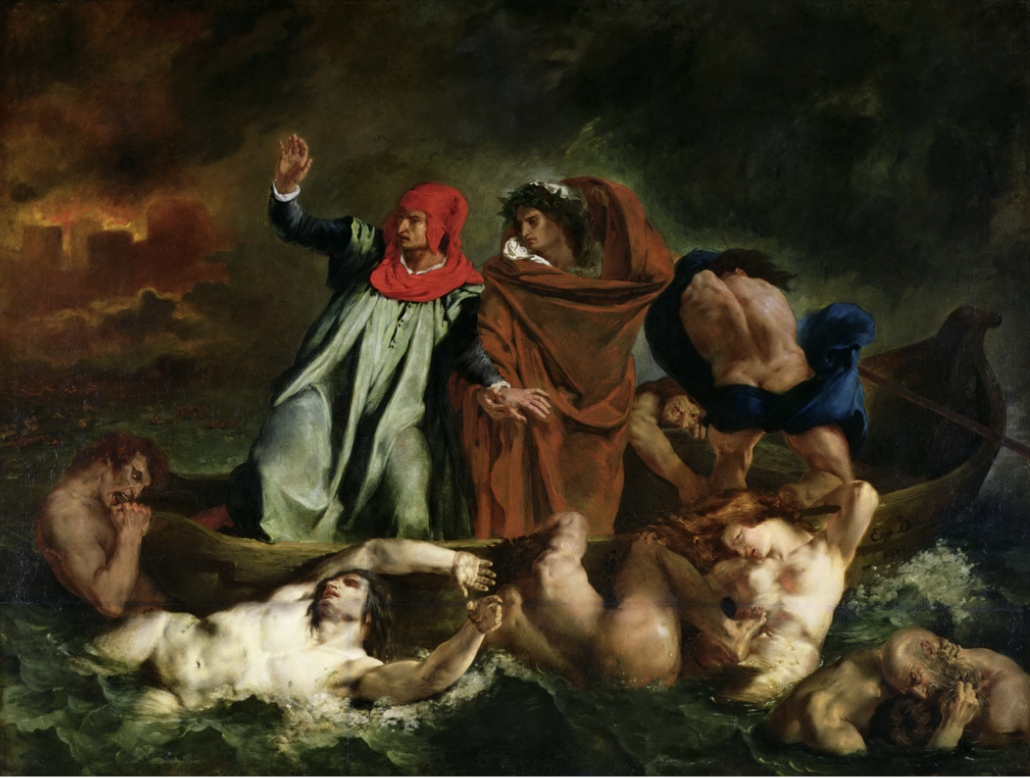
The Barque of Dante
Eugene Delacroix
Delacroix’s first major painting
inspired by Gericault’s The Raft of the Medusa
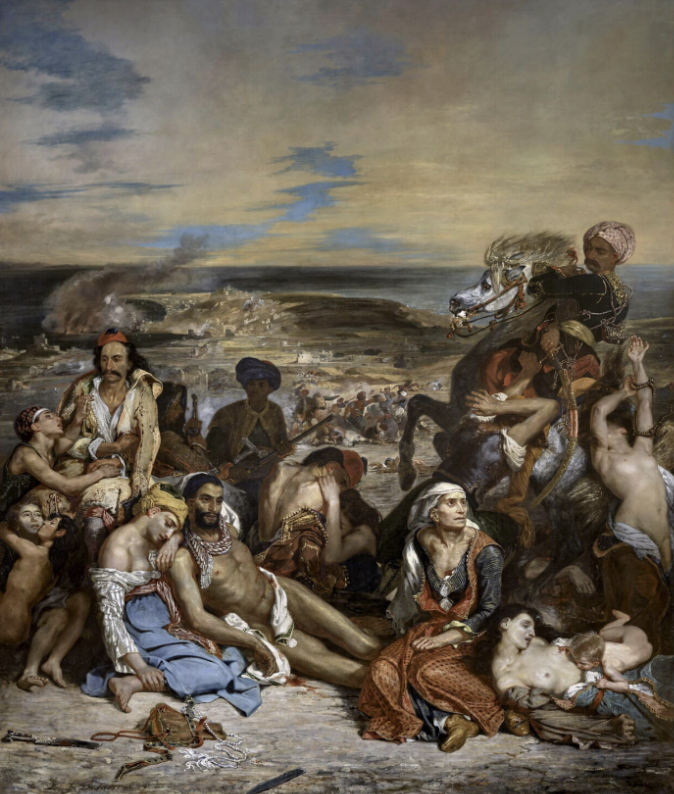
Massacre at Chios
Eugene Delacroix
got Delacroix recognized by authorities as a leading painter in the Romantic style
sick, dying Greek civilians about to be slaughtered by the Turks
expressed the official policy for the Greek cause in their war of independence against the Turks
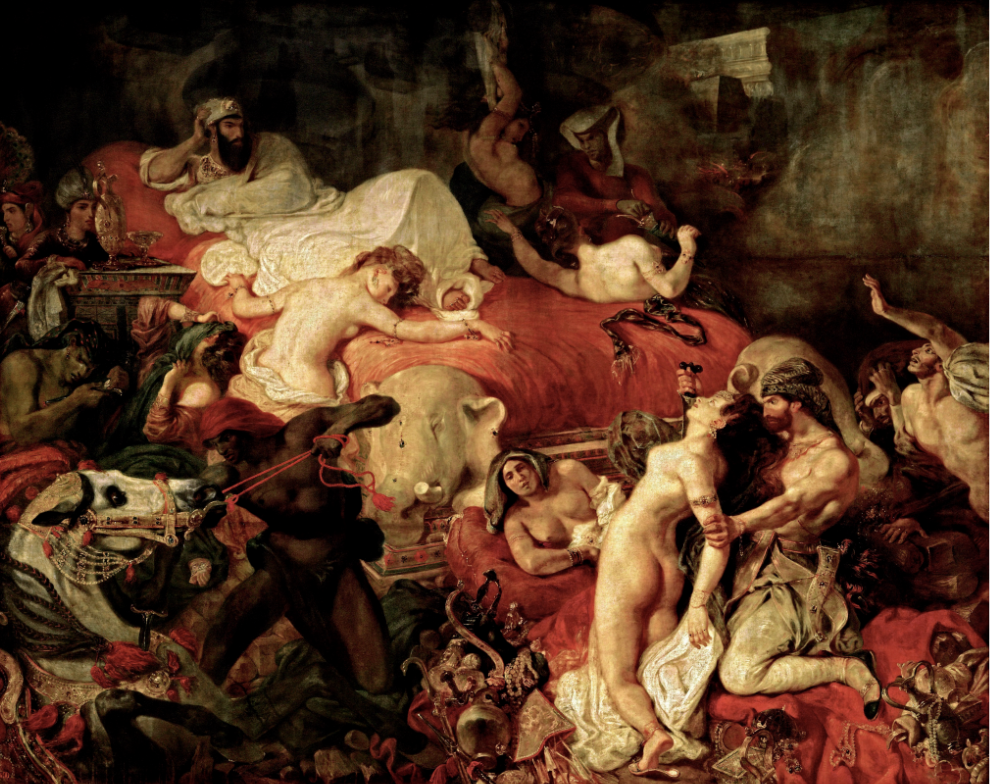
The Death of Sardanapalus
Eugene Delacroix
death of the Assyrian king Sardanapalus
Assyrian king orders his army to kill his lovers
emotional scene - beautiful colors, exotic costumes, tragic events

Liberty Leading the People
Delacroix
highlights the differences between the romantic approach and the neoclassical style
Notre Dame
class & age differences → democratic revolution
Liberty half naked & in profile → Greek tradition
romanticism
concerned with human emotion / experience
fluid brushworks & energized compositions
diagonals & movement
power of nature & the sublime experience in encountering its forces
contemporary subject matter
Joseph Mallord William Turner
1775; lower/middle-class family
Fishermen at Sea
Snow Storm: Hannibal and his Army Crossing the Alps
grew eccentric as he got older; experienced depression after his father’s death
in that period, Turner used oils transparently & evoked pure light by use of shimmering color
The Slave Ship
Snow Storm: Steam-Boat off a Harbour’s Mouth
Rain, Steam and Speed - the Great Western Railway
Heidelberg
died in London
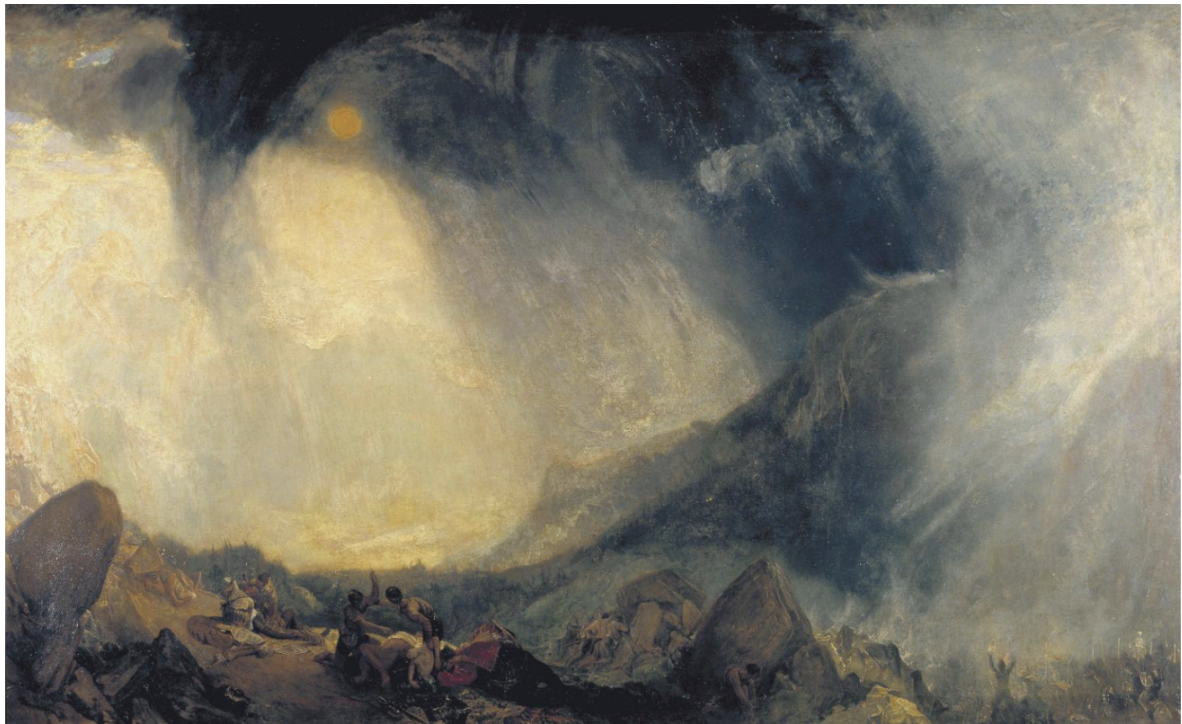
Snow Storm: Hannibal and his Army Crossing the Alps
JMW turner
sublime
Turner’s mature style
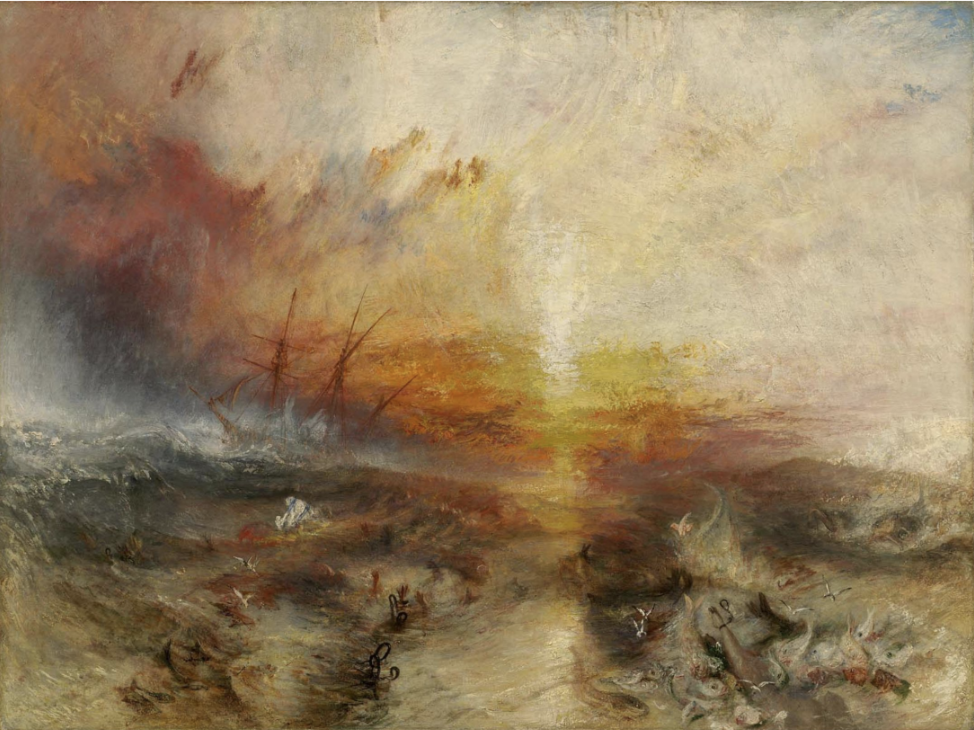
The Slave Ship
Turner
sublime
use of shimmering colors for light

Snow Storm: Steam-Boat off a Harbour’s Mouth
Turner
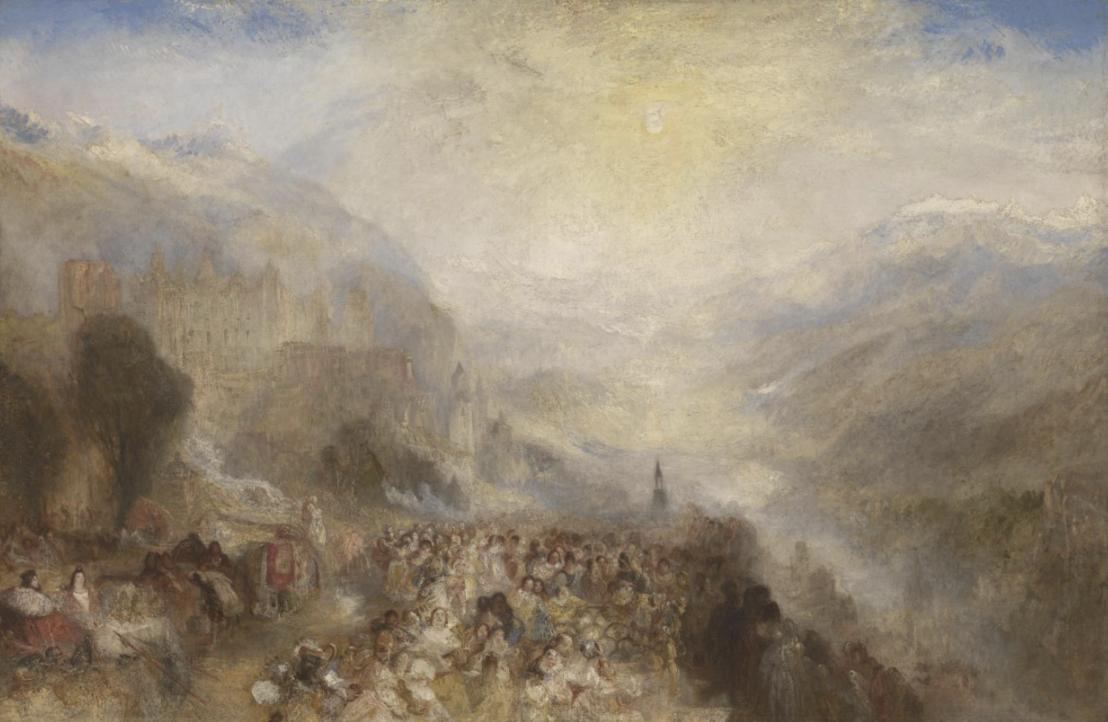
Heidelberg
Turner

Rain, Steam and Speed - the Great Western Railway
Turner
train v. boat
old bridge v. new bridge
peasant w two animals
train without roof
Caspar David Friedrich
1774, German; raised Lutheran
3 siblings died in childhood → traumatic
studied under Johann Quistorp; influenced by theologian Ludwig Kosegarten → nature = revelation of God
began education by making copies of casts form antique sculptures before drawing from life
experimented in print making
Landscape with Temple in Ruins
won Weimar competition
Tetschen Altar (Cross in the mountains)
The Monk by the Sea
Abbey in the Oakwood
Wanderer above the Sea of Fog
Moonrise over the Sea
Woman at a Window
Main and Woman contemplating the Moon
suffered stroke in 1835
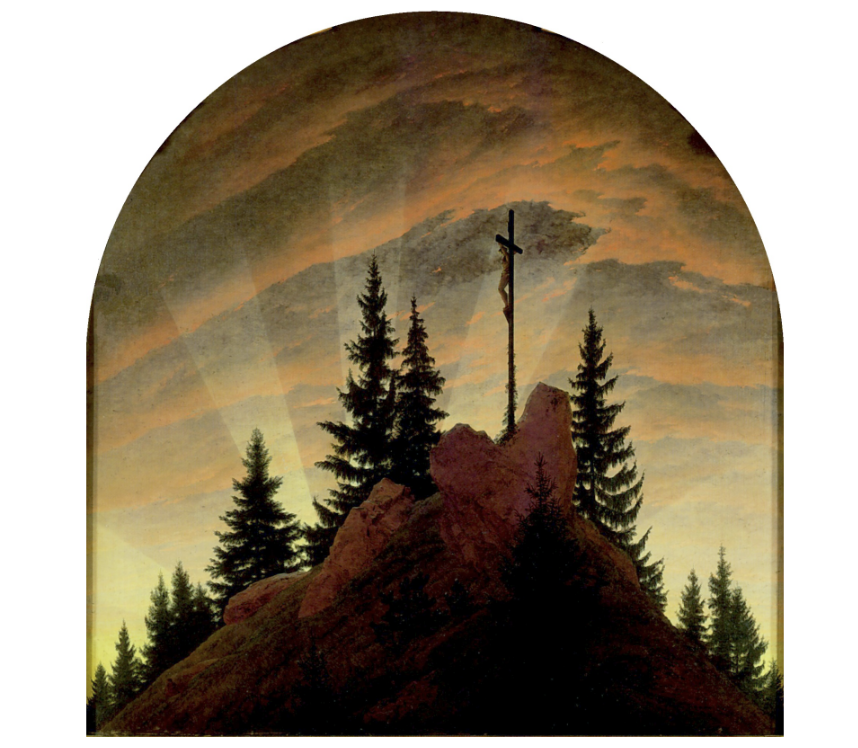
Cross in the Mountains Tetschen Altar
Turner
altarpiece panel commissioned for a family chapel in Bohemia
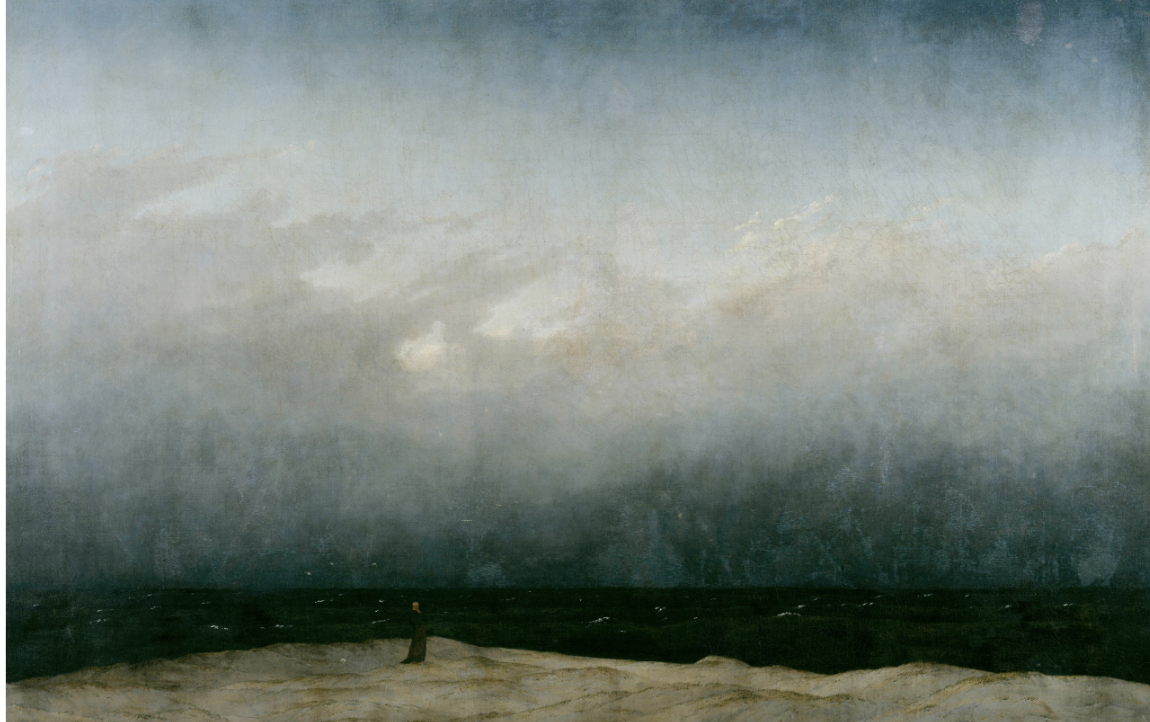
The Monk by the Sea
Friedrich
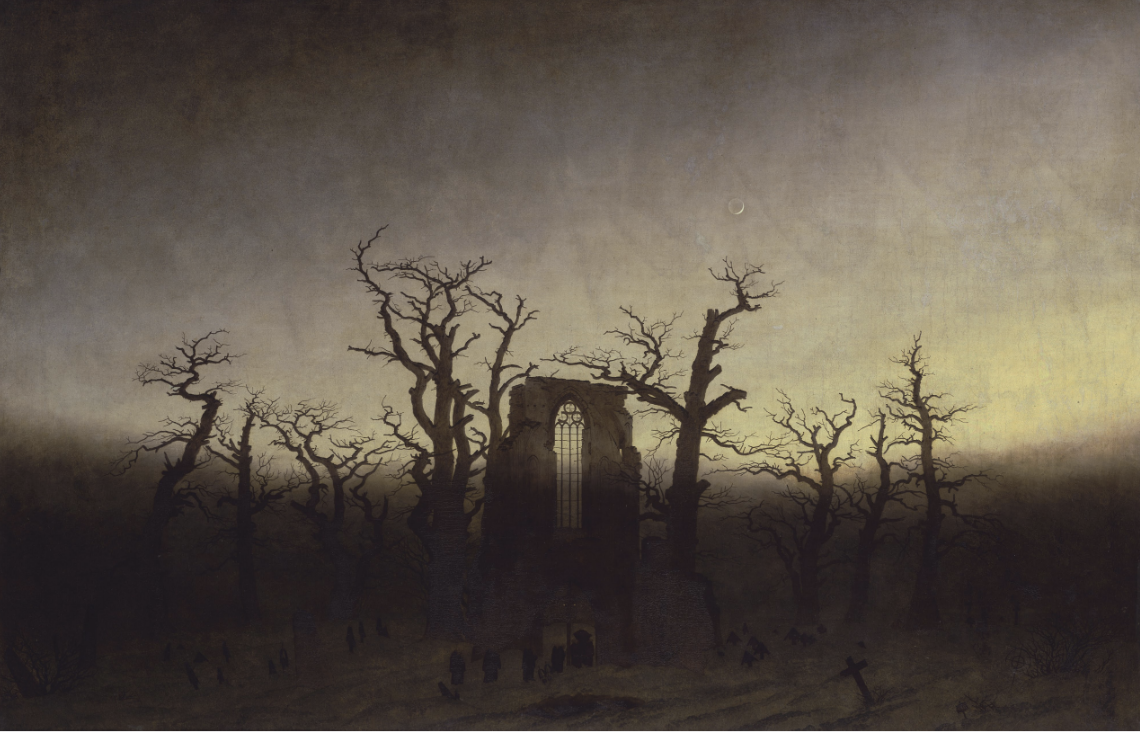
Abbey in the Oakwood
Friedrich
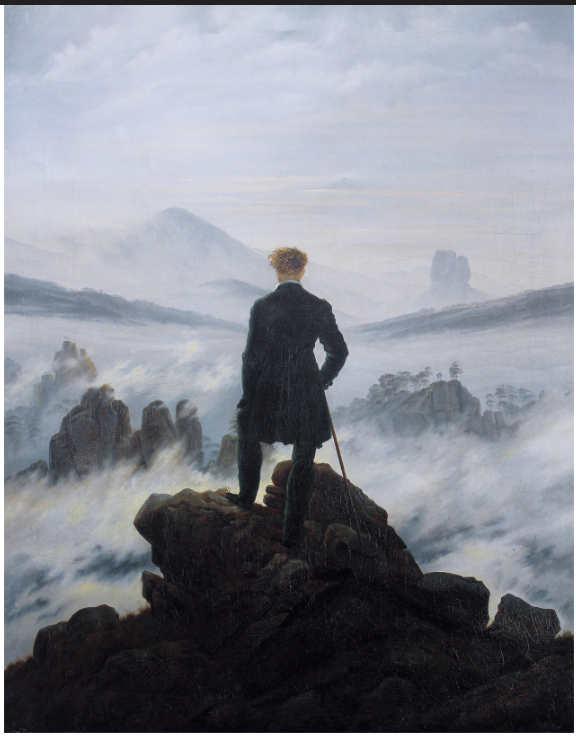
Wanderer above the Sea of Fog
Friedrich
the most famous Rückenfigur in art; the person is seen from behind, contemplating the view before him → the viewer can identify with the image’s figure & then recreate the space to be conveyed
Rügenfigur
rear-facing figure.
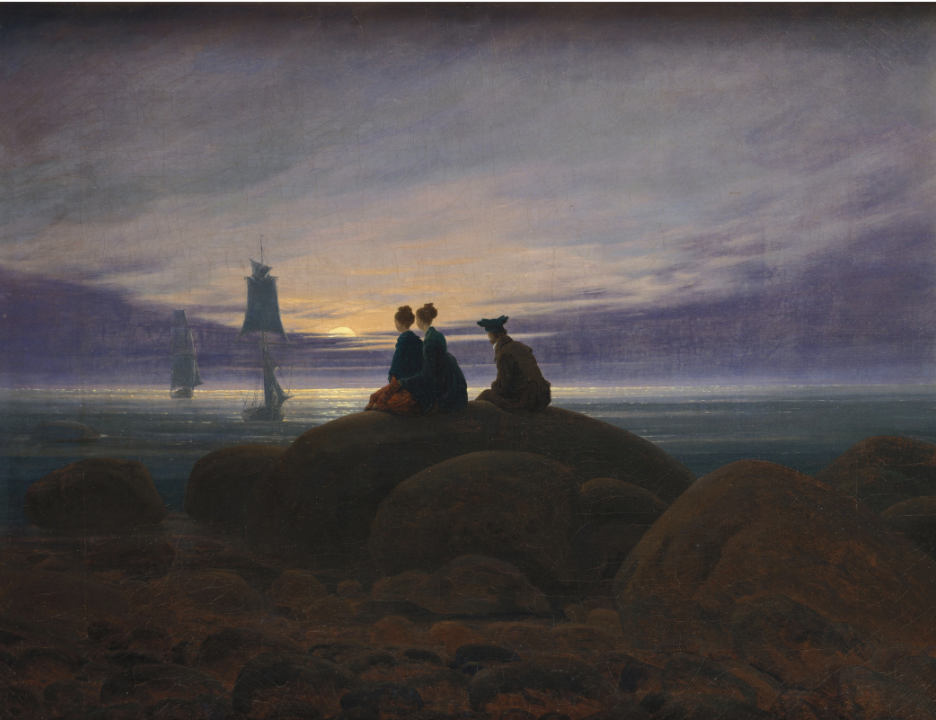
Moonrise Over the Sea
Friedrich
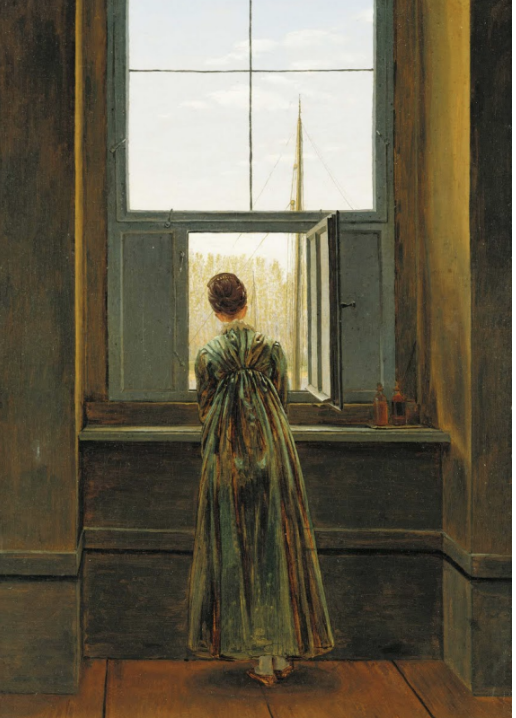
Woman at a Window
Friedrich
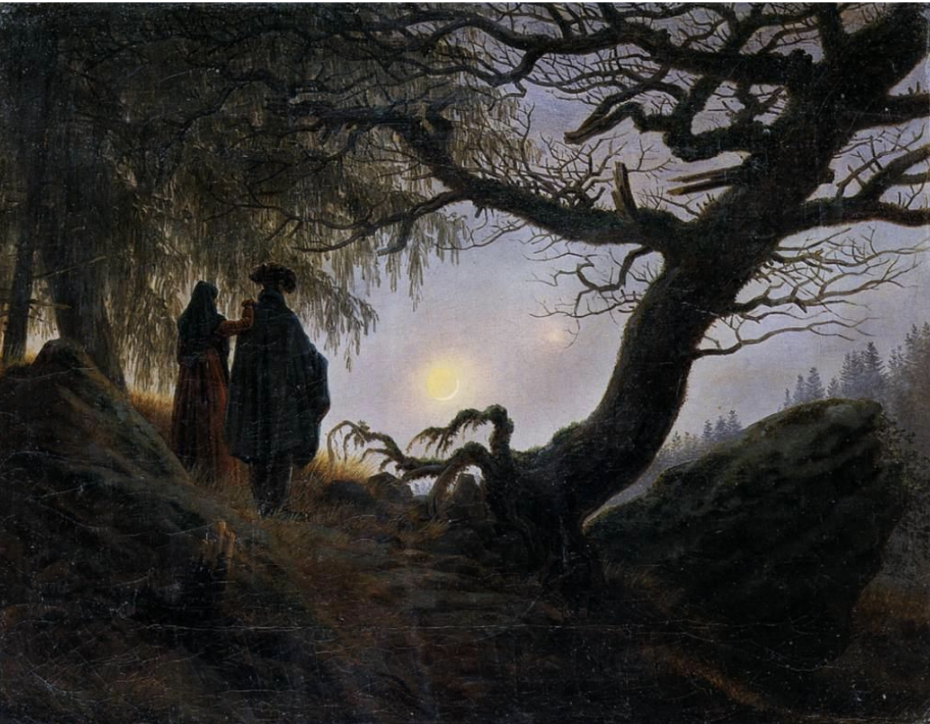
Man and Woman Contemplating the Moon
Friedrich
sublime
the quality of greatness, whether physical, moral, intellectual, metaphysical, aesthetic, spiritual or artistic; especially refers to a greatness beyond all possibility of calculation, measurement, or imitation
according to Burke
The Beautiful is that which is well-formed & aesthetically pleasing
the Sublime = has the power to compel & destroy us
Sublime > Beautiful; marks the transition from the Neoclassical era to Romantic era
3 aspects of sublime
fear
ungraspable
human r
sublime: ungraspable
subli
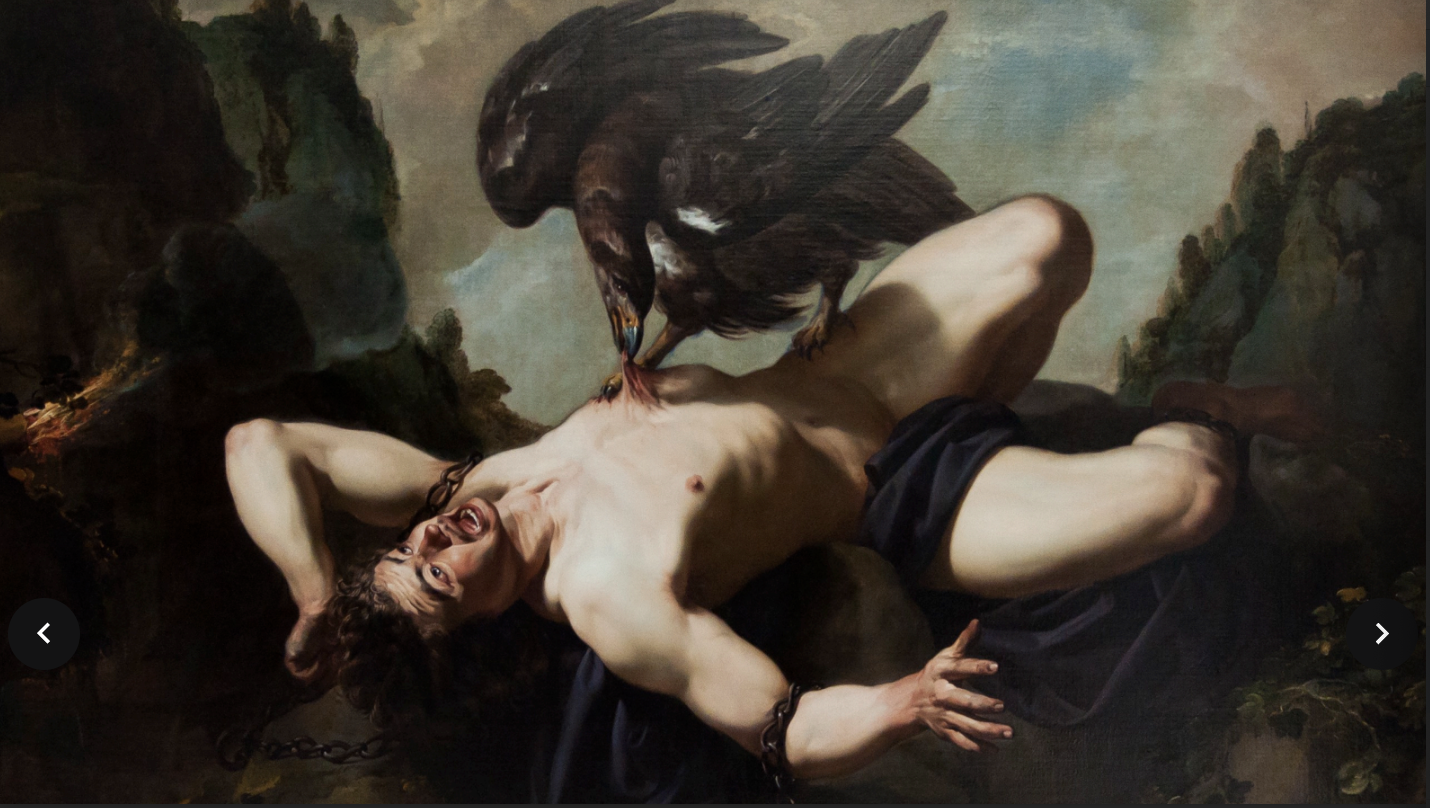
Prometheus
→ challenging authority
Frankenstein
Gothic novel; human condition → challenging authority
Frankenstein = young scientist obsessed with creating life